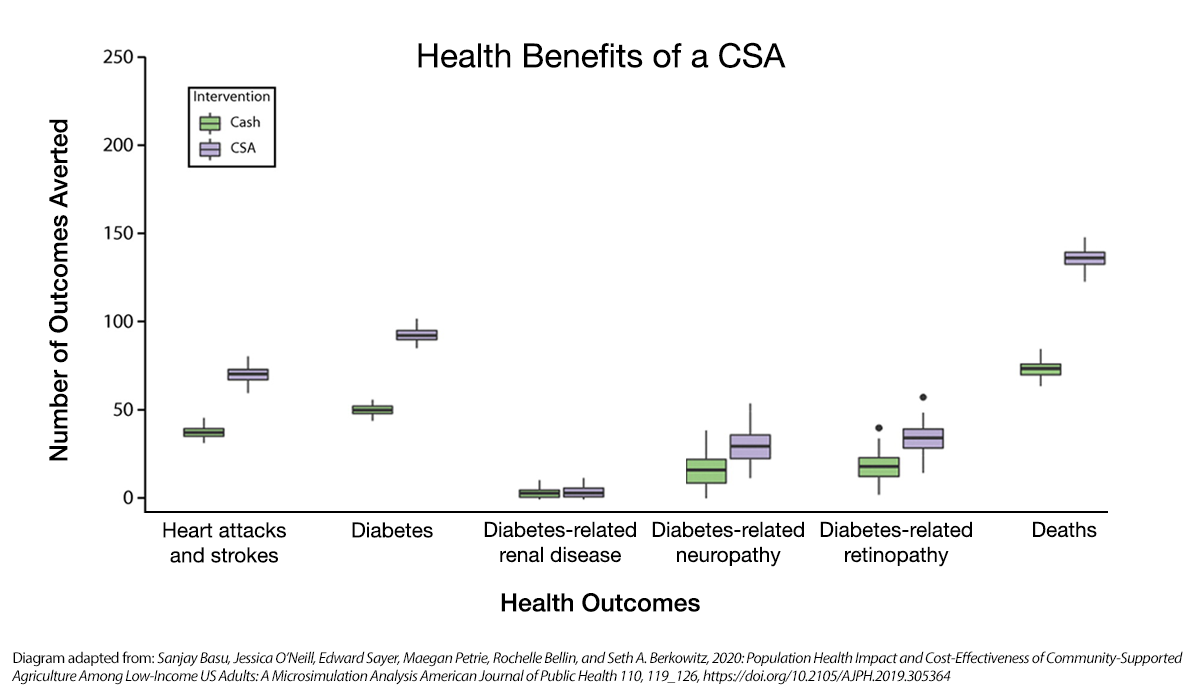In 2018, 14.3 million American households were food insecure, and 42% of adults lived with obesity. The financial instability spurred by the Covid-19 pandemic threatens to lift these numbers even higher in 2020.
One government response to food insecurity has historically been the Supplemental Nutritional Assistance Program (SNAP), which extends funds to lower-income persons to pay for groceries. But the problems with our food system go beyond cost. Retailers build more fast food and unhealthy food options in lower-income communities, reserving consistently healthier — and more expensive — options for higher-income communities. Healthy foods are, quite literally, not available to many people receiving SNAP, even when they have been given funds to buy them.
One solution to this lack of access might come from farmers themselves. Farm shares, or community-supported agriculture (CSA) programs, are models where families pay upfront for a share of a farm’s yearly harvest. In Boston, farm shares often run around $400 for 10 weeks of fresh groceries delivered from farm to apartment door. These types of CSAs are often advertised to wealthier families seeking a healthier diet.
Sanjay Basu and team measured how effective CSAs could be at improving the health of financially vulnerable people who may rely on SNAP. They used data from a Massachusetts trial that registered patients at the Community Health Center of Franklin County for a $300, 24-week CSA or gave them $300 in cash benefits.
The researchers paired the results of this trial with individuals’ self-reports from the National Health and Nutrition Examination Survey. They used a computer model to predict rates of atherosclerotic cardiovascular disease, type 2 diabetes mellitus, diabetes-related end-stage renal disease or renal failure, diabetes-related neuropathy, diabetes-related retinopathy, and death if the Massachusetts study were to extend beyond the 24 weeks of the original trial.
The above graphs illustrate the short-term (10 years) and the long-term results. As shown, a cash intervention alone would avoid nearly 75 deaths per 10,000 people over 10 years, but a CSA would prevent nearly twice that amount in the same period.
A startling and rising number of US residents face the everyday uncertainty of food insecurity, but the solution may be more than money. Why not go back to the farm?
Databyte via , 2020: Population Health Impact and Cost-Effectiveness of Community-Supported Agriculture Among Low-Income US Adults: A Microsimulation Analysis. American Journal of Public Health 110, 119_126. Data visualization by Tasha McAbee.














